The Queen of Water is one of Rome’s many names and perhaps one of its most significant. The relationship between La Regina dell’ Acqua and the flow of water cannot be attributed merely to the monumental 📍Fontana di Trevi or many other smaller yet equally prodigious fountains by Bernini that take all the attention in selfie-stick shots and postcards.
Rome is marked by the flow of the ultimate vital liquid, starting with the Tiber and its aqueducts, and ending in its fountains. One of the all-time favorites, aside from the Trevi at the conjunction of the three roads, is the 📍Fontana dei Quattro Fiumi in Piazza Navona, representing the peoples, fauna, and flora of four famous rivers on four continents: the Nile in Africa, the Danube in Europe, the Ganges in Asia, and the Río de la Plata in America.
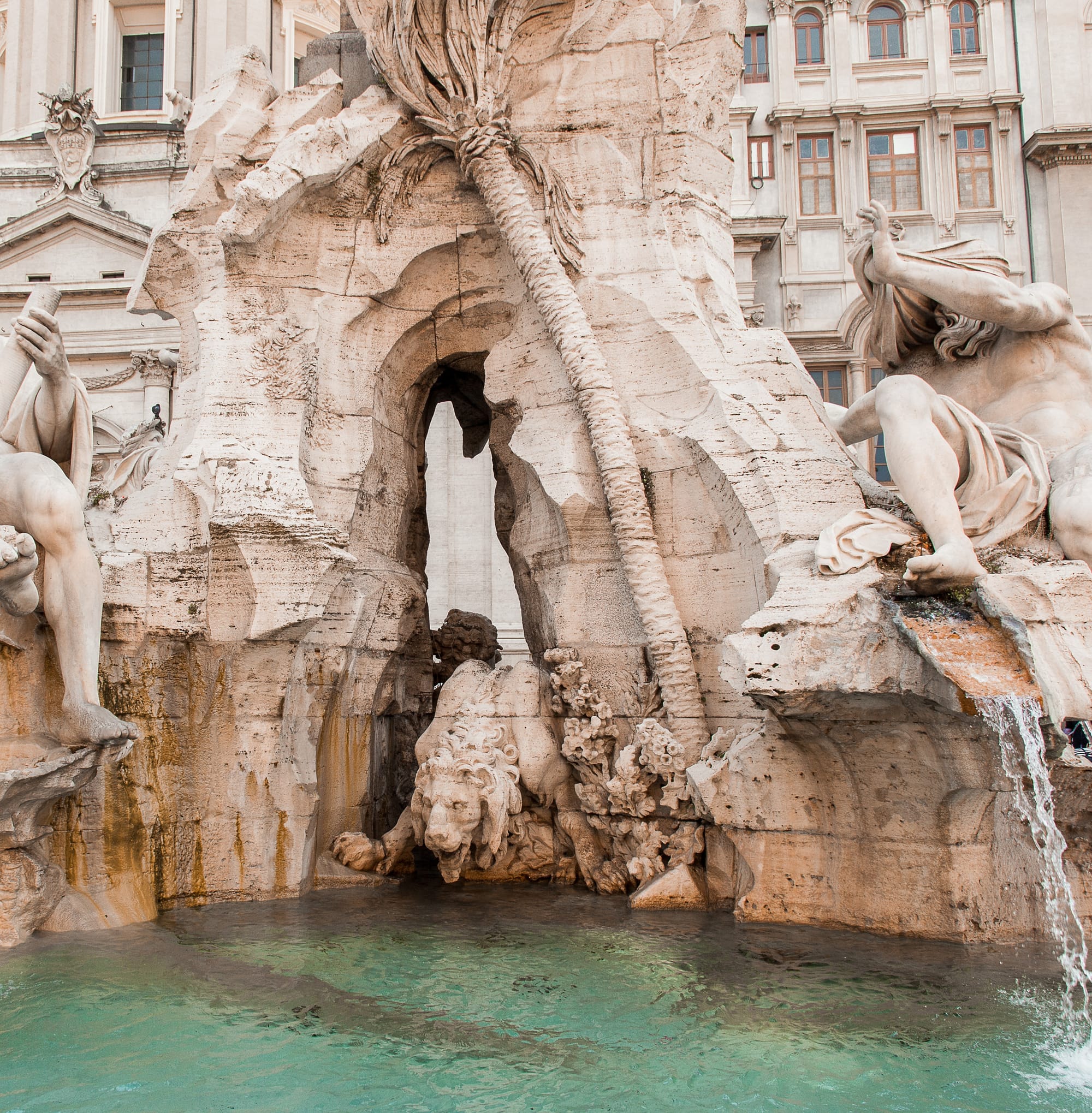
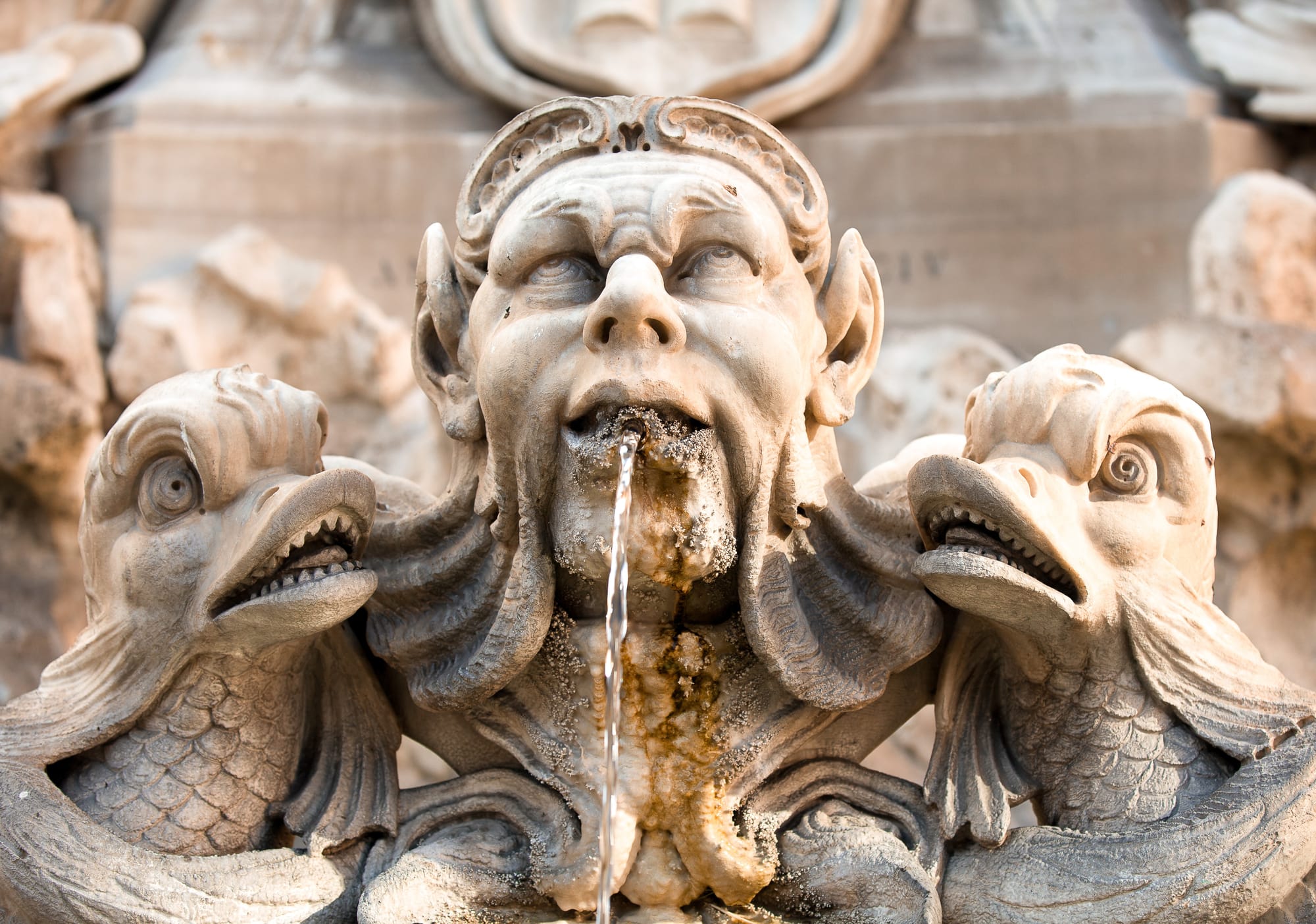
Close by, the quirky emoji-looking faces on each of the four sides of the 📍Fontana del Pantheon are equally astounding in terms of sculptural technique, but also proof of how aesthetics and mundane human sentiments commingle in unanticipated ways throughout the city.
All sorts of fantastic fountains surprise passersby as they wander among alleys that lead to huge avenues and small plazas before opening up onto astounding vistas of Roman antiquity. The mythology of the fountains here includes deeply-seated superstitions, such as the belief that throwing coins into their depths will guarantee a return ticket to Rome in the future. Minute details and myriad flora and fauna, alongside human figures represented on the many fountains, large and small, populate the city. There are bizarre interpretations of what grinning dolphins are supposed to look like, lions standing in strange positions poised to lap up water, smiling crocodiles with skin that seems like armor, many types of plants, including palm trees to vines, and even bees, frogs, and dragons.
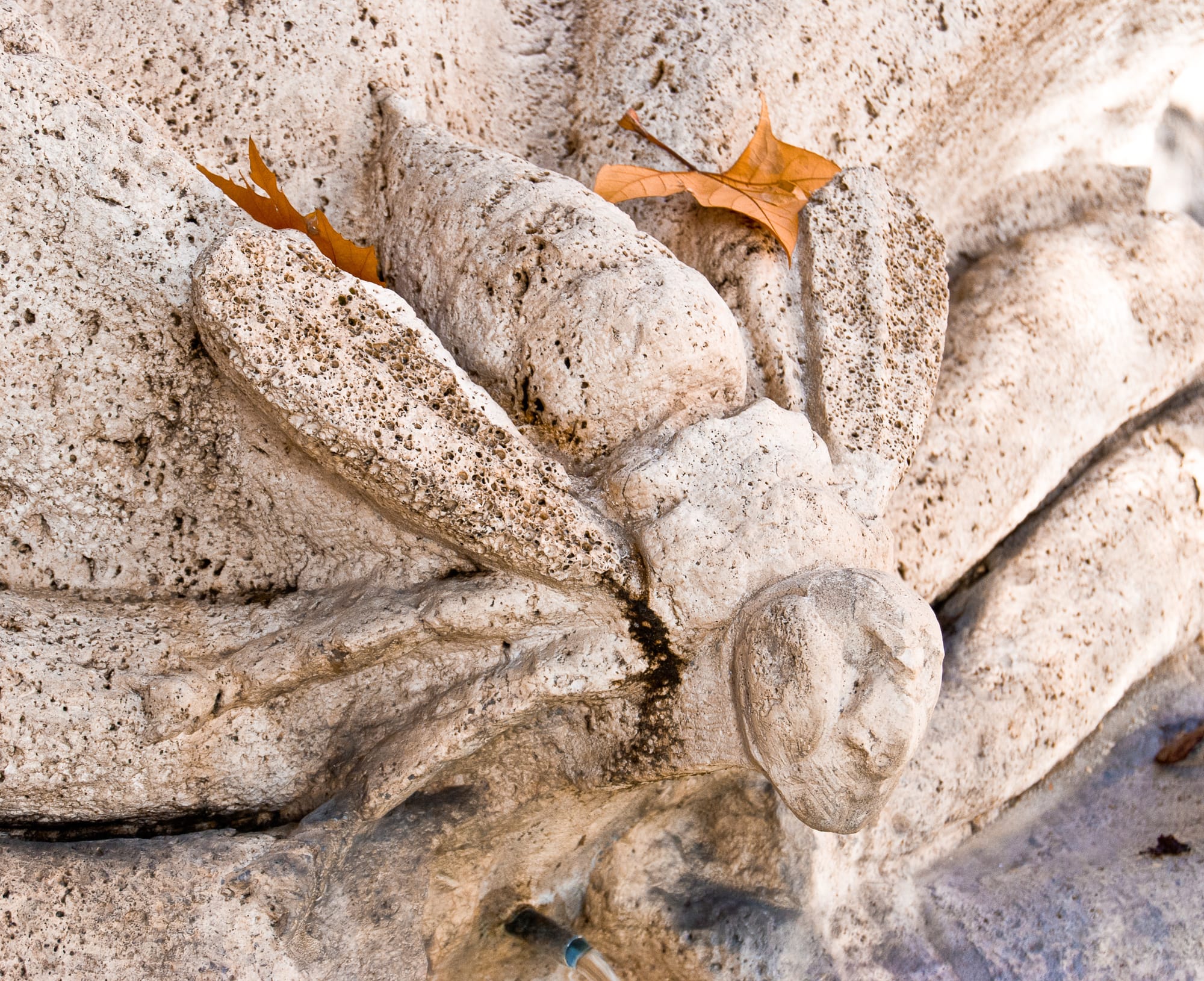
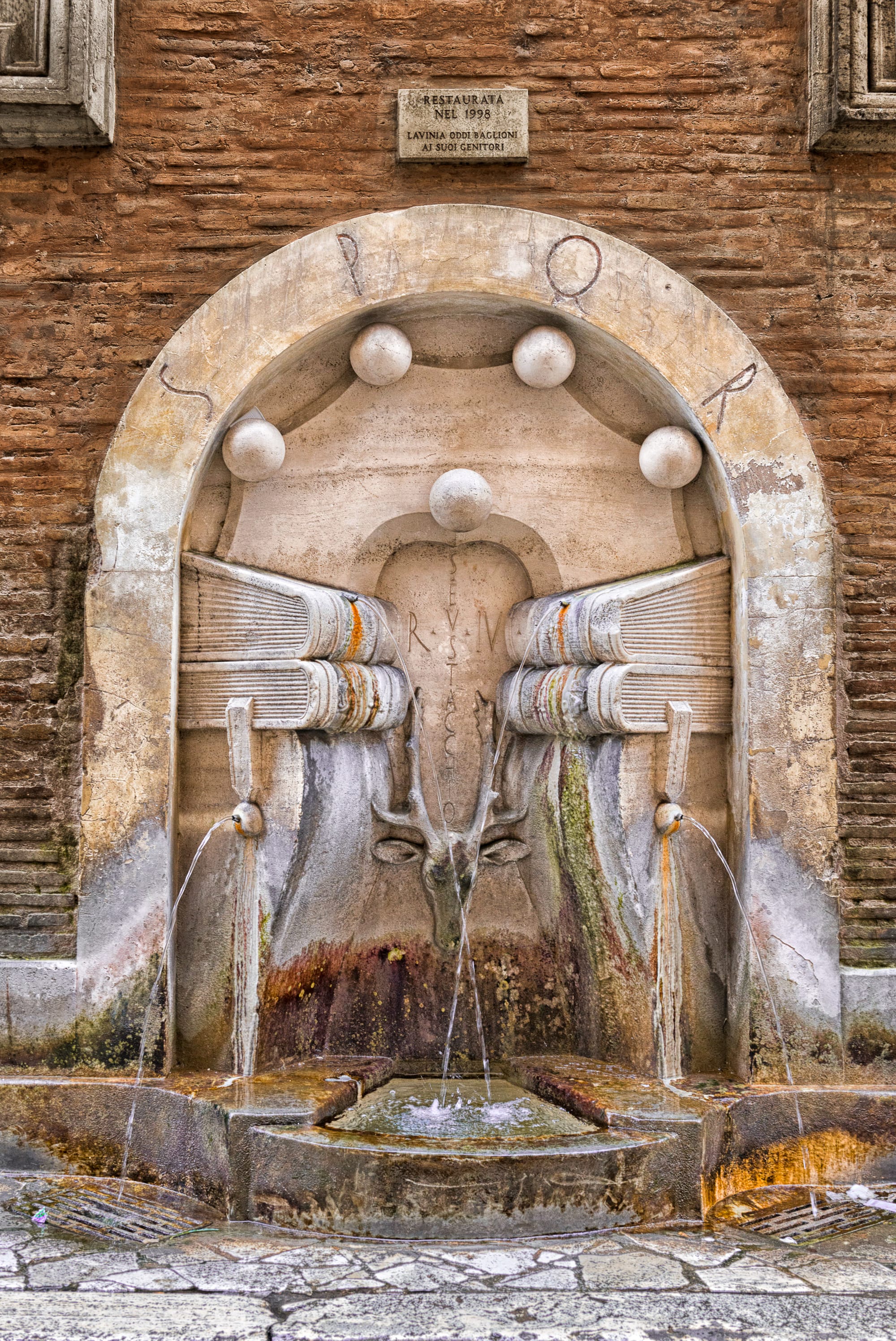
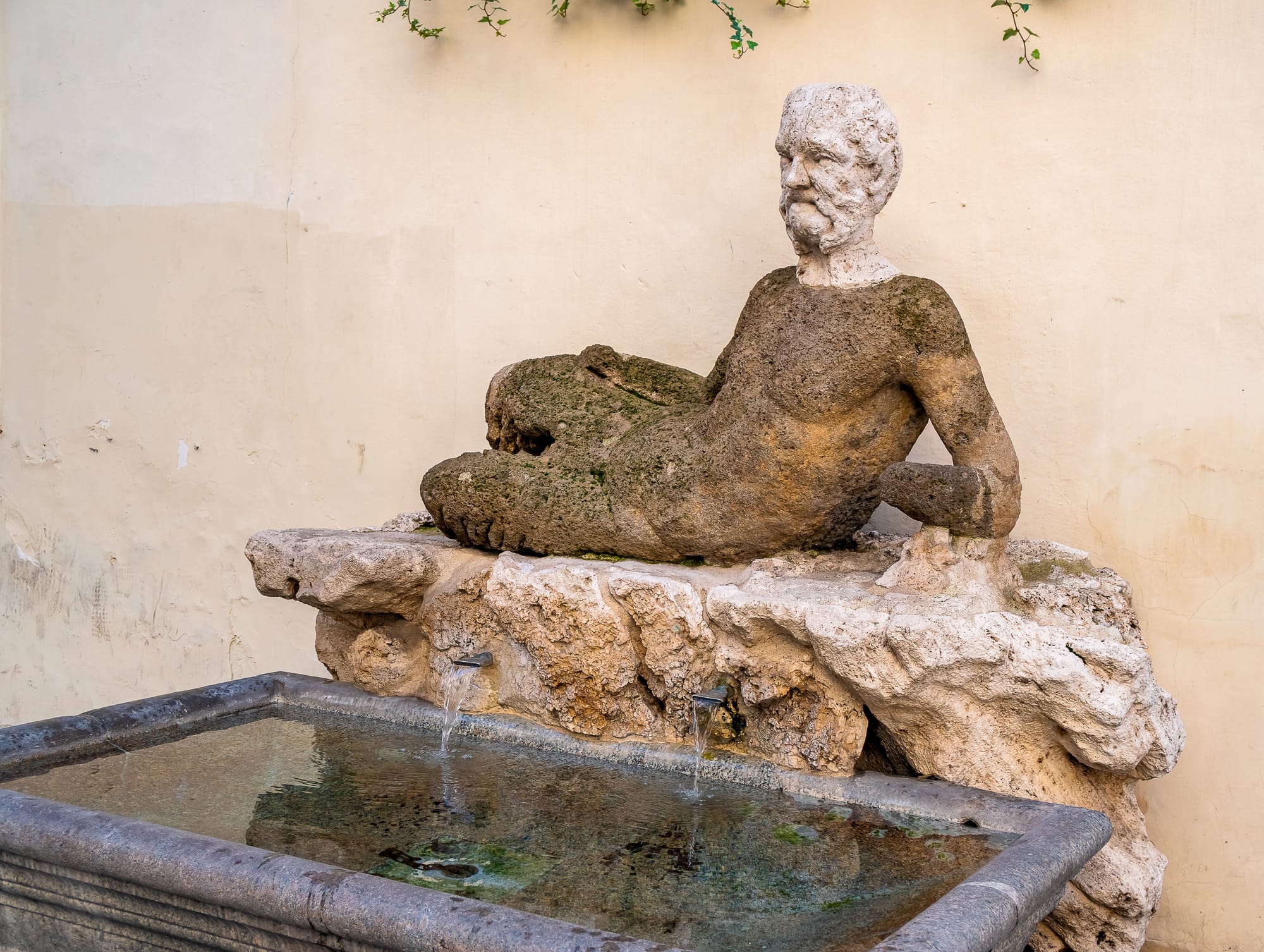
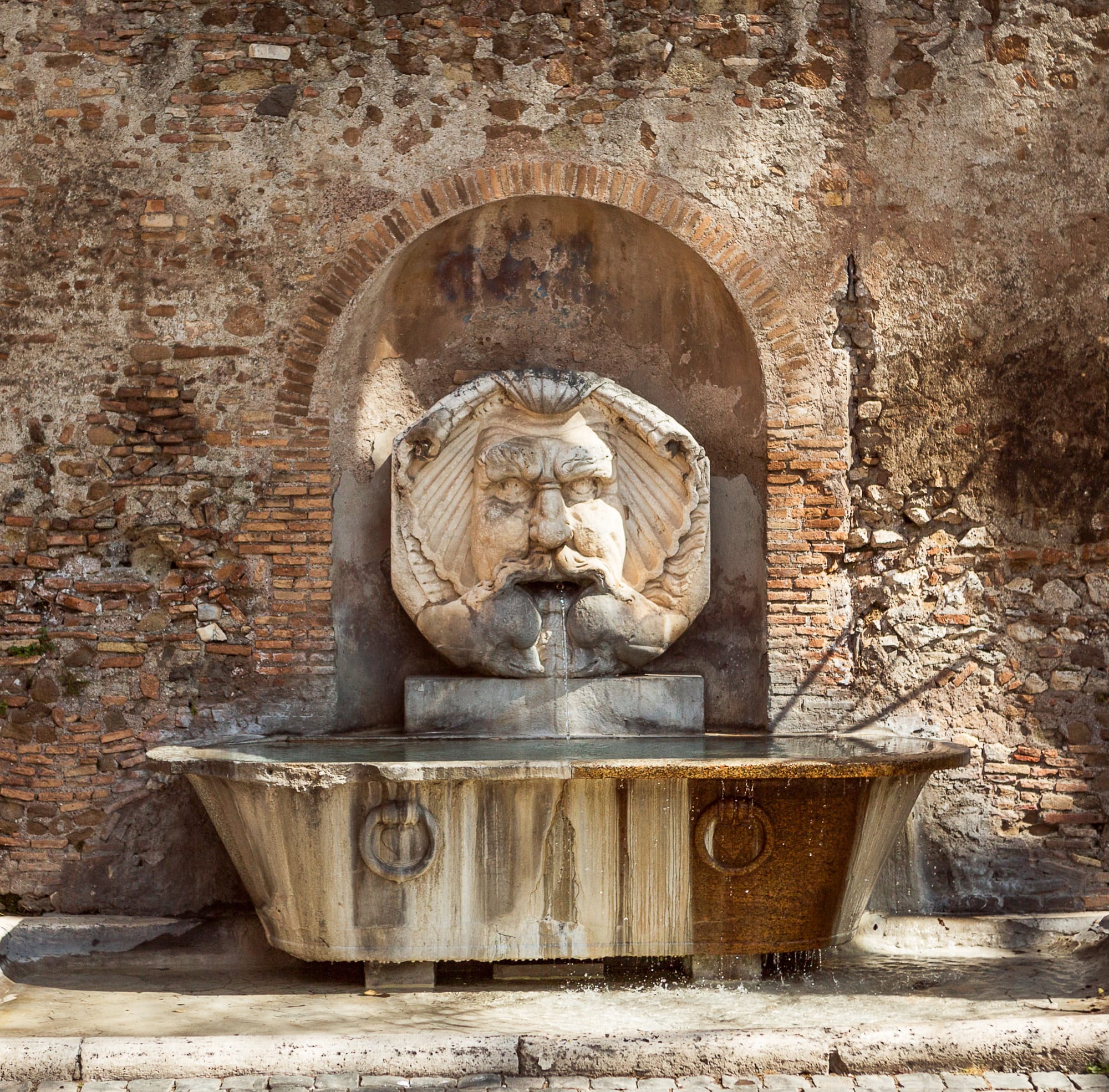
Fountains in Rome. Photos from Getty Images
After emerging from a little cobblestoned street is the 📍Fontana delle Tartarughe, whose characteristic turtles are not original, but were added later. Then, in a nondescript alley behind Sant’Ivo alla Sapienza–close to the former location of Sapienza University–is the 📍Fontanella dei Libri, with four thick books surrounding the head of a deer, which symbolizes the neighborhood of Sant’ Eustachio. Close to Piazza del Popolo, so discreet you could easily miss it, lies the mossy and fascinating 📍Fontana del Babuino. The figure on the fountain, which has come to be described as a baboon, is actually a representation of a satyr, a mythological creature that was half man, half goat. It is one of Rome’s “talking statues,” images upon which satirical political commentary was posted. So even if it seems minuscule and hidden, it became significant enough that it gave its name to the street it is on. Near the 📍Fontana del Tritone is a smaller fountain, the 📍Fontana delle Api, where giant bees explore the edges of an enormous conch, just a few steps from a bus stop at the start of Via Veneto.
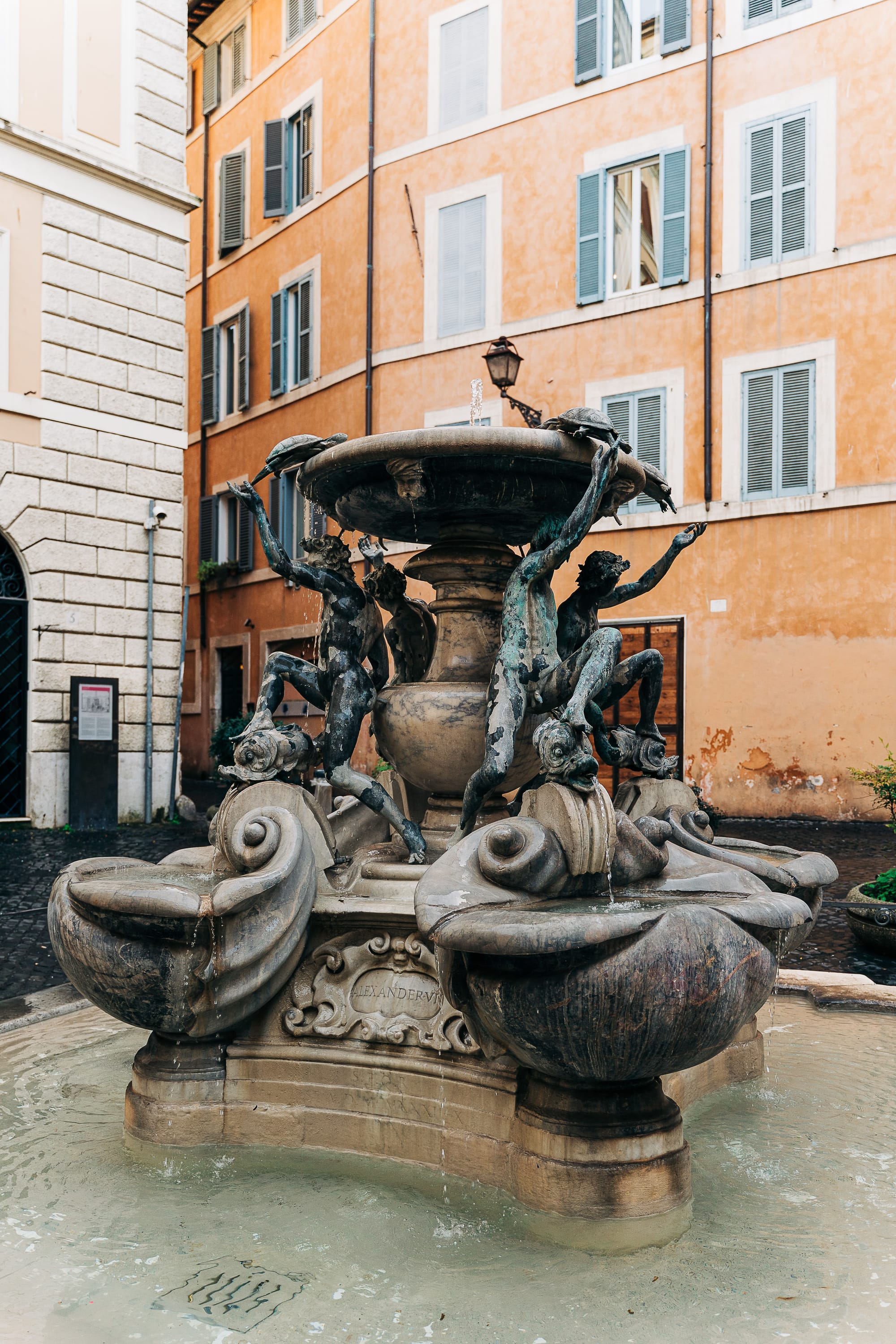
One could almost imagine a trip to this wonderous city centered around fountains: a walking tour of water sources, a route any visitor can draw thanks to Google Maps. However, it is the element of surprise that constitutes half the magic of these bountiful deposits of water. Fountains in Rome come in various shapes and sizes, many unique testaments to that overzealous time in Italian Art History we call Baroque. Yet the prehistory of their importance lies in a much simpler type of fountain: the very humble public drinking fountain. These tiny sources of water, of which there are more than two thousand around the city, are a characteristic Roman institution, partly because of an almost magical quality they possess: they do not have a tap that opens and closes. Water rushes from their spout unstopped, unmeasured, eternally, without the possibility of closure.
In his treatise on the waters of Rome, Sextus Julius Frontinus’ words take us back to the origins of this unique characteristic in antiquity. As Water Commissioner, the man in charge of the health of Roman waters back then, wrote at the end of the first century that “water may flow without interruption, day and night.” Even today, many of the larger fountains are not just ornamental, but have a functional purpose, providing the water pressure needed for the flow of drainage and waterworks in the city. Some years ago, there was an initiative to suspend the continued flow of water from public drinking fountains, but citizens protested, arguing that many people, including the homeless and the many flower vendors of Campo de’ Fiori, as well as the thousands of animals and birds of the city, depend on the free flow of water. Perfectly drinkable and supposedly never going to waste—it is said the unused water is redirected to other ventures beyond their drinkability—the crystalline public water of Rome is free for all and a symbol of abundance as much as equality.
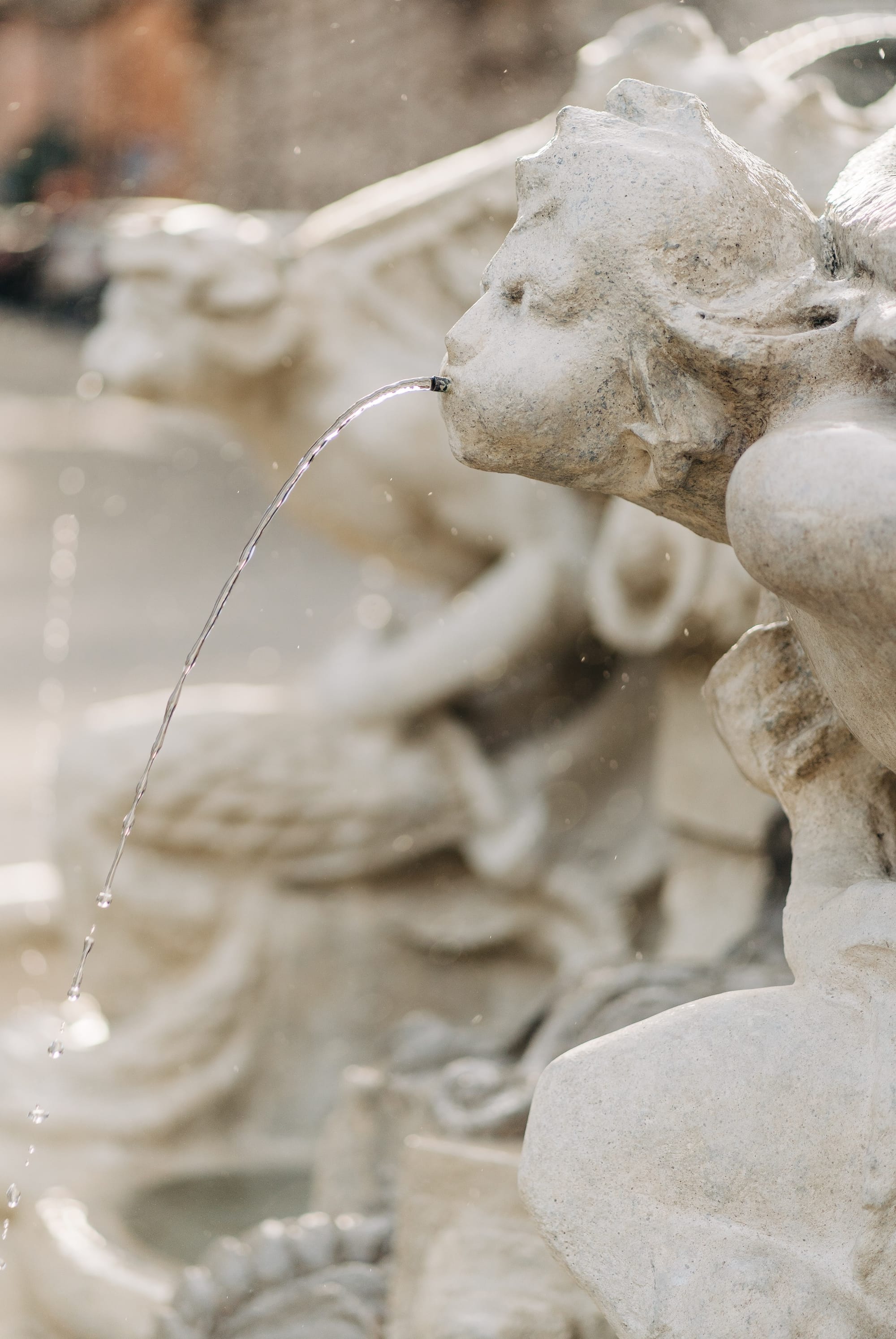
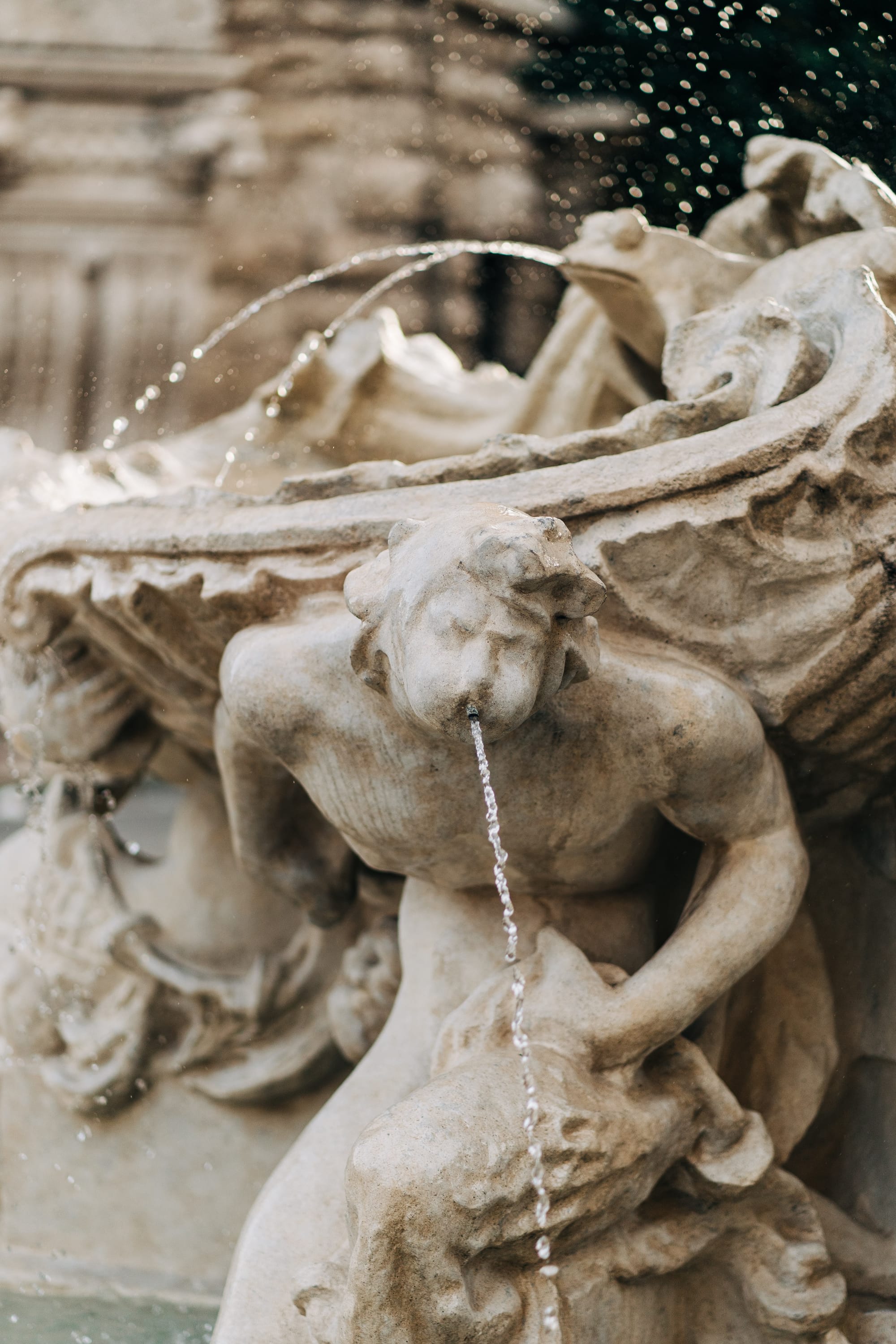
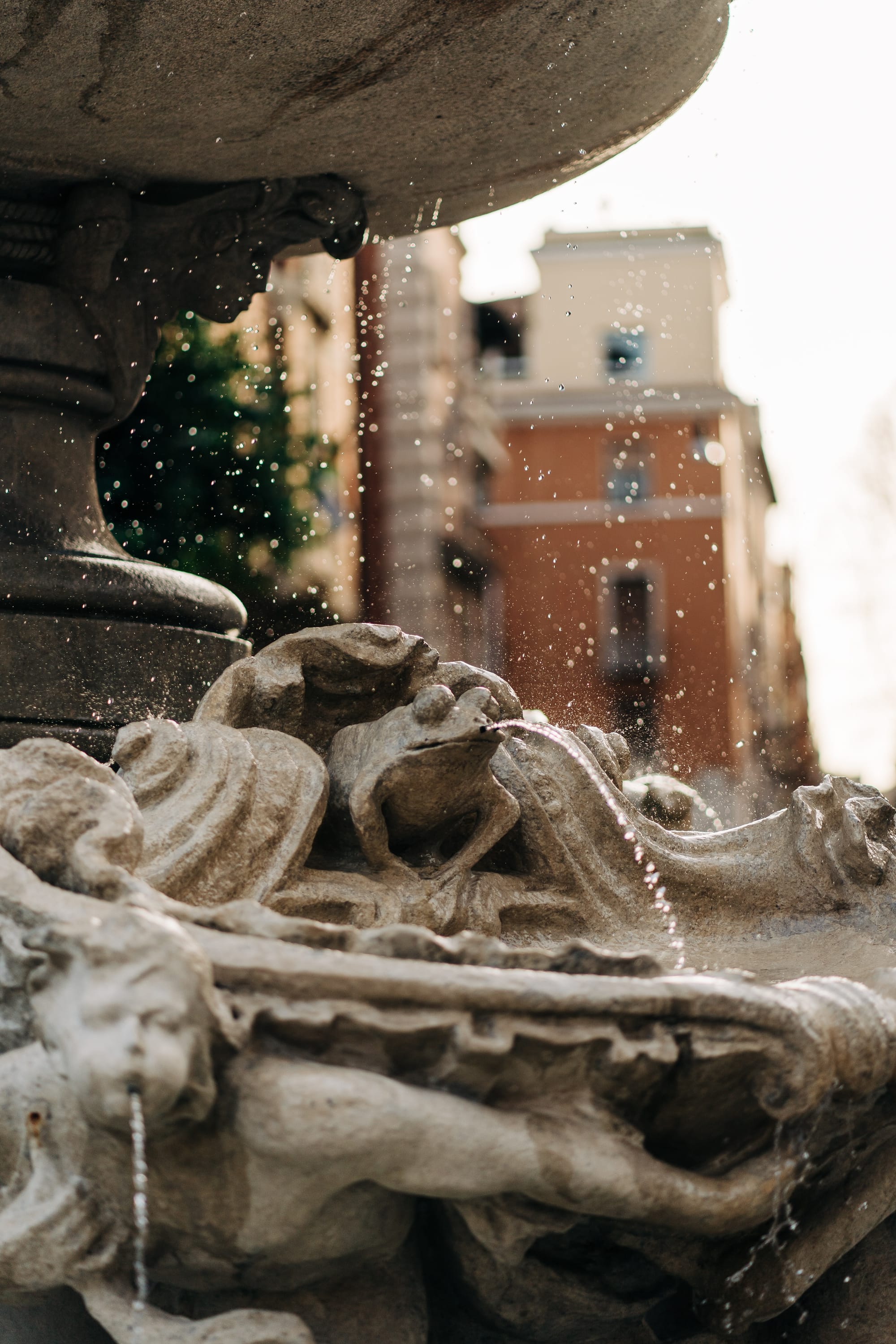
Fontana delle Rane in Piazza Mincio. Photo by Gabriella Clare Marino
When it comes to mid-sized fountains, there are some that are not monumental, but are also not just tiny drinking fountains. Yet they are still meant as points to quench the thirst of the passerby. One of the most beautiful is at the base of the Spanish Steps at the Piazza di Spagna, at the 📍Fontana della Barcaccia, where a few stepping stones allow the thirsty tourist to come close to the half-sunk boat and reach a drinking spot that provides respite from the heat. Equally unique because of its shape, the 📍Fontana del Mascherone di Santa Sabina—outside the Giardino degli Aranci, or Garden of Oranges—is a large marble mask within a conch, the flow of water emerging from under the heavy mustache of a very serious wise-looking man represented in the mascherone. Underneath, the water accumulates in a bathtub-like structure that overflows. Nearby is a water source that is symbolically relevant to the city, given the water flows from a spout in the shape of the head of a she-wolf, a reference to the founding of Rome and the myth of Romulo and Remo.
Known as fontanella, or small fountain, there is a large quantity of small drinking fountains on hundreds of street corners throughout the city. Romans fondly call them nasoni, or nasone in the singular, meaning “long nose” and these are usually atop knee-high stone or metal columns, with a metal spout pouring water endlessly. Their design was introduced en masse in the city around the 1870s, and they remain a staple of Rome’s relationship to water. The nasone’s particularity lies in its design and the fact that if one puts a finger at the tip of the spout, closing off the flow of water, the liquid squirts out vertically through a small hole at the top of the “long nose” that is the nozzle. This allows the drinker to direct the water towards one’s mouth, and thus anyone can drink at any time without requiring a vessel to hold the water.

The concept of the public fountain, as a common space accessible to all, will perhaps one day be just a fantasy in a world where drinkable water is increasingly becoming scarce. At least for now, however, it remains a reality in Rome. “The water comes from the mountains,” say the locals, “thanks to the aqueducts built in Ancient Roman times.” The persistence, renewal, and survival of Rome’s public fountains throughout history is testament to a time when water was broadly considered a public good, and its free-flow remains a symbol of the city’s good fortune and abundance. With their turquoise aqua color, deep blue tint, or greenish copper patina, Rome’s fountains remain mythological, decorative, and functional monuments to the continuity of life.
A version of this article appears in print, in Issue 1 of Álula Magazine with the headline: “The Hidden and Not-so-Hidden Fountains of Rome”.

